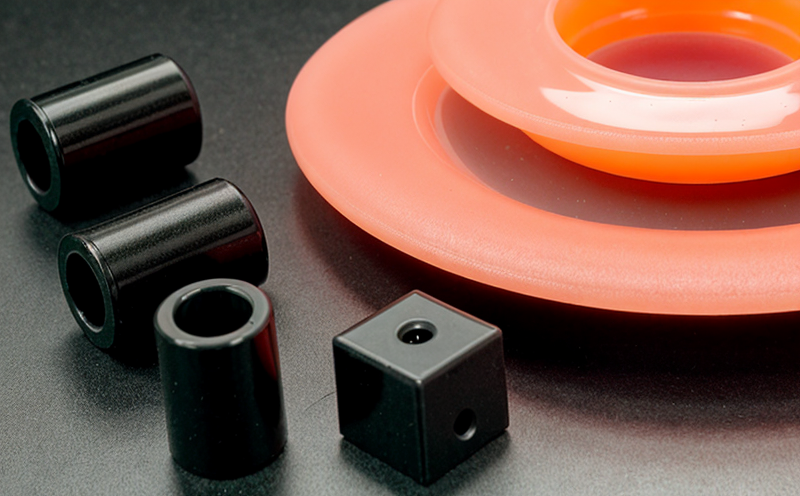ASTM F963 Safety Testing of Plastic Toys and Leisure Products
The ASTM F963 standard is a comprehensive set of requirements designed to ensure that plastic toys, leisure products, and materials used in these items meet stringent safety standards. Compliance with this standard is crucial for manufacturers who want to sell their products globally or within specific regions like the United States.
ASTM F963 covers a wide range of potential hazards, including mechanical components, electrical aspects, chemical emissions, flammability, and small parts that could pose choking risks. The standard is particularly important for ensuring the safety of children's toys and related products designed for use in recreational activities.
The testing process involves multiple stages, each focusing on different aspects of product safety. Mechanical testing assesses durability and resistance to damage from typical usage and abuse by consumers. Electrical tests ensure that products do not pose electrical hazards when used as intended. Chemical analysis checks for harmful substances like lead, cadmium, and other toxic elements.
Flammability testing ensures that materials are resistant to ignition under specified conditions. Small parts testing is essential to prevent the ingestion of small components by children who may put toys in their mouths. Additionally, biological testing evaluates potential allergens or irritants present in the material composition.
The scope of ASTM F963 also includes labeling requirements, which are critical for informing consumers about any hazards associated with a product and providing necessary instructions on safe use. This comprehensive approach ensures that manufacturers adhere to international safety standards, thereby protecting both users and the environment from avoidable risks.
Compliance with ASTM F963 not only safeguards end-users but also protects brands against potential legal actions due to non-compliant products. By adhering to these stringent guidelines, manufacturers can build trust among consumers and maintain a positive reputation in the market.
In summary, ASTM F963 safety testing is fundamental for ensuring that plastic toys and leisure products are safe, reliable, and free from harmful substances or design flaws. This standard plays a vital role in safeguarding public health and promoting responsible manufacturing practices across industries.
Why It Matters
The importance of ASTM F963 testing cannot be overstated, especially given the diverse range of plastic toys and leisure products that are available today. These items often come into contact with children's skin or mouths, making safety a paramount concern.
- Ensures compliance with international standards
- Avoids legal risks associated with non-compliance
- Maintains consumer trust and brand reputation
- Promotes responsible manufacturing practices that prioritize safety
- Reduces the risk of product recalls and associated costs
In addition to these direct benefits, ASTM F963 testing also contributes to broader societal goals such as environmental sustainability. By ensuring that materials are non-toxic and safe for use in children's products, manufacturers help reduce the need for costly end-of-life disposal solutions.
Scope and Methodology
The scope of ASTM F963 extends beyond mere physical testing; it encompasses a holistic evaluation of both the product itself and its components. The standard covers various types of plastic toys, including those intended for outdoor play, indoor use, or specific age groups.
Testing typically begins with an initial review of the product's design and materials used in its manufacture. This involves checking compliance with labeling requirements specified by ASTM F963. Labeling is crucial as it informs users about potential risks and provides guidance on proper usage.
The mechanical testing component examines how well the toy withstands typical wear and tear, including impacts from falls or drops. Electrical tests assess whether any electrical components pose a risk of shock or fire hazards when used correctly. Chemical analysis identifies and quantifies any potentially harmful substances present in the material composition.
Flammability testing is conducted to ensure that materials do not ignite easily under standard conditions, which helps prevent fires caused by toys left near heat sources like heaters or open flames. Small parts testing ensures there are no components small enough to cause choking hazards for young children. Biological testing evaluates the presence of allergens or irritants in the product.
Once all these tests have been completed successfully, a detailed report is prepared summarizing findings from each test. This document serves as evidence that the product meets all specified requirements under ASTM F963. It also helps guide further development efforts aimed at improving safety features or reducing any identified risks.
Why Choose This Test
- Ensures compliance with international standards
- Avoids legal risks associated with non-compliance
- Maintains consumer trust and brand reputation
- Promotes responsible manufacturing practices that prioritize safety
- Reduces the risk of product recalls and associated costs
Selecting ASTM F963 testing offers numerous advantages for manufacturers seeking to produce safe, reliable toys and leisure products. By ensuring full compliance with this rigorous standard, companies can avoid costly mistakes that could lead to product recalls or legal issues.
Moreover, adhering to ASTM F963 helps establish a reputation for quality and safety, which is invaluable in today's competitive marketplace. It also demonstrates commitment to the well-being of consumers, particularly children who are most likely to use these products regularly.





